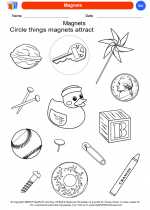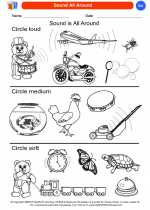Pituitary Gland
The pituitary gland, also known as the hypophysis, is often referred to as the "master gland" because it plays a crucial role in regulating various bodily functions by secreting hormones. It is a small, pea-sized gland located at the base of the brain, just below the hypothalamus, and is divided into two main parts: the anterior pituitary (adenohypophysis) and the posterior pituitary (neurohypophysis).
Anatomy of the Pituitary Gland
The pituitary gland is divided into two distinct parts:
- Anterior Pituitary (Adenohypophysis): This part of the pituitary gland produces and releases several important hormones, including growth hormone, prolactin, adrenocorticotropic hormone (ACTH), thyroid-stimulating hormone (TSH), follicle-stimulating hormone (FSH), and luteinizing hormone (LH).
- Posterior Pituitary (Neurohypophysis): The posterior pituitary does not produce hormones itself, but it stores and releases two hormones produced by the hypothalamus: oxytocin and vasopressin (antidiuretic hormone).
Functions of the Pituitary Gland
The pituitary gland is responsible for regulating a wide range of bodily functions, including:
- Regulation of growth and development through the secretion of growth hormone
- Regulation of metabolism through the secretion of thyroid-stimulating hormone
- Control of the adrenal glands through the secretion of adrenocorticotropic hormone
- Regulation of reproductive functions through the secretion of FSH and LH
- Stimulation of milk production in the mammary glands through the secretion of prolactin
- Regulation of water balance and blood pressure through the secretion of vasopressin
- Stimulation of uterine contractions during childbirth and milk ejection during breastfeeding through the secretion of oxytocin
Study Guide
To effectively study the pituitary gland, consider the following key points:
- Understand the anatomy of the pituitary gland, including its two main parts: the anterior pituitary and the posterior pituitary.
- Memorize the hormones produced by each part of the pituitary gland and their respective functions.
- Explore the role of the pituitary gland in regulating growth, metabolism, reproduction, and other bodily functions.
- Consider the interplay between the hypothalamus and the pituitary gland in hormone regulation.
- Review clinical conditions associated with pituitary gland dysfunction, such as pituitary tumors and hormonal imbalances.
By understanding the structure and function of the pituitary gland, you can gain valuable insights into the intricate system of hormone regulation in the human body.
[Pituitary Gland] Related Worksheets and Study Guides:
.◂Science Worksheets and Study Guides Kindergarten. Pushing, Moving, Pulling

 Coloring Worksheet
Coloring Worksheet
 Coloring Worksheet
Coloring Worksheet
 Coloring Worksheet
Coloring Worksheet
 Coloring Worksheet
Coloring Worksheet
 Coloring Worksheet
Coloring Worksheet
 Coloring Worksheet
Coloring Worksheet
 Coloring Worksheet
Coloring Worksheet
 Coloring Worksheet
Coloring Worksheet
 Coloring Worksheet
Coloring Worksheet
 Coloring Worksheet
Coloring Worksheet
 Coloring Worksheet
Coloring Worksheet
 Coloring Worksheet
Coloring Worksheet
 Coloring Worksheet
Coloring Worksheet
 Coloring Worksheet
Coloring Worksheet
 Coloring Worksheet
Coloring Worksheet
 Coloring Worksheet
Coloring Worksheet
 Coloring Worksheet
Coloring Worksheet
 Coloring Worksheet
Coloring Worksheet
 Coloring Worksheet
Coloring Worksheet
